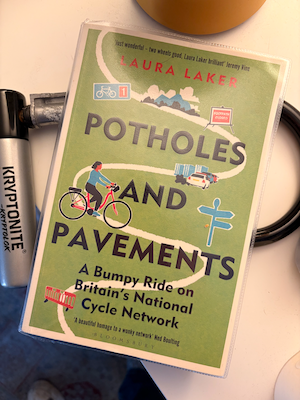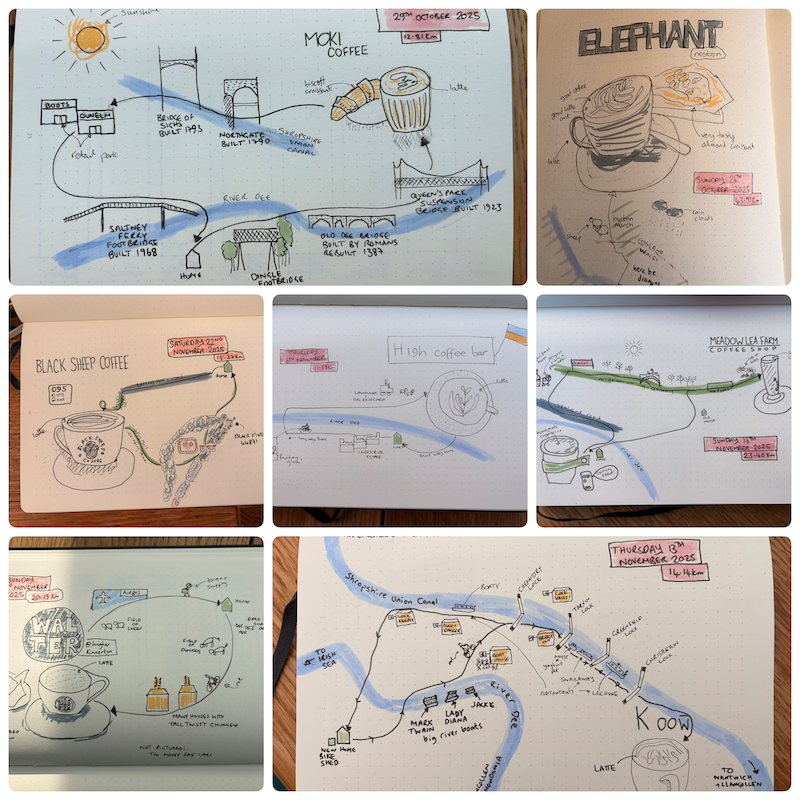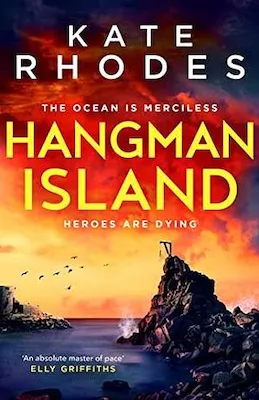Potholes and Pavements
by Laura Laker
Friday, May 2, 2025

I regret getting this book out of the library. I should have bought a copy as I want to keep the facts, figures and sources cited close at hand! The reason I got it from the library is that I’ve generally found books about cycling to be pretty meh - more about the author than actually about cycling - this is definitely an exception. It’s kind of a history of the UK National Cycle Network, in many places it’s a litany of its faults, and also very much a guide to how it could, pretty easily, be so much better. Laker travels around England, Scotland and Wales (she apologises for never reaching Northern Ireland) cycling the paths and meeting the people and organisations who have created them, and the users too. It’s a travelogue, a letter of complaint, a call to arms and a love letter all rolled into one.
I have my own long list of complaints about the NCN, but I remember how cycling life was before it existed, and even the wonky incomplete network we have today is better than how things were when I cycled in my teens in the 1990s. What we have today is so much better but also I’d just love it if we carried on developing the system and ended up with a proper network that actually joins up to where you want to go like in the Netherlands. The book is great for giving you answers and anecdotes to refute the usual arguments as to why the UK can’t possibly have a network like the Netherlands. The stories that gave me hope were things like the fact that the Dutch motorists are just as grumpy as British motorists about removal of car parking or lanes, it’s not that the Dutch are really any different to us.
If I try and tell you about my favourite bits of the book then I’ll be here all day and will probably just rewrite the book. Go and read it, it’s worth your time. I’ll limit myself to a handful of things I’d like to remember.
- A new bike path was built beside the A27 in East Sussex (somewhere I lived and cycled as a teen) and it wasn’t built by the usual rag tag cycle path building methods, but by National Highways because they figured the best way to speed up the traffic on the road was to give the cyclists their own lane. NH could compulsory purchase the land required and their expertise is in building good surfaces. By contrast the usual methods of bike path building can get derailed when a single landowner doesn’t agree to the use of their land, and paths are often surfaced on a shoestring that leaves them unsuitable for the likes of mobility scooters. More of this would be great.
- When deciding where to put bike paths commuting is the only factor considered! This is ridiculous. I work from home, but it’s not like I never leave the house and I make 90%, probably more, of my journeys by bike. I variously cycle to the shops, to restaurants, to meet friends and just to go places because it’s fun. I go places by bike that I would never have bothered going to as a motorist. I wouldn’t show up as a potential cyclist at all on these surveys despite the fact that I’m hugely enthusiastic about this method of travel. Conversely when building roads other factors like attracting tourism are very much taken into account. It’s ludicrous that roads get judged by different criteria to bike paths.
- The return on investment of a bike path is huge, the return on investment from a road is nowhere near as good. Even in the Netherlands, with huge amounts of experience, they have to temper the amount of benefit they guess a bike path will bring because the numbers sound over the top silly, but they are proved right time and time again.
- When roads are congested, we build more/wider roads and these carry more traffic which allows us to go more places, build more things and the roads get congested all over again. So if we build more roads they just get used more. If we build more and better cycle paths then we get more cyclists. These things are both exactly the same and also very different. (And the same goes for public transport, more and better public transport leads to more users.)
I could be here all day adding bullet points! Just go and read the book already :D
The book gave me an insight into how the NCN came to be, I wasn’t paying much attention to cycling infrastructure around the millennium, having stopped cycling shortly before and not coming back to it until a few years after. This makes me feel more sympathetic to the network, which has been put together on a shoestring budget with a lot of volunteer labour and maintenance. But also it makes me angry that such a fabulously important and beneficial thing has been created in such a way. And the millennium was twenty-five years ago which is enough time that things created then are failing now. The network has absolutely proved its worth, now it needs to grow up and become the integral part of our transport infrastructure it really should be.









